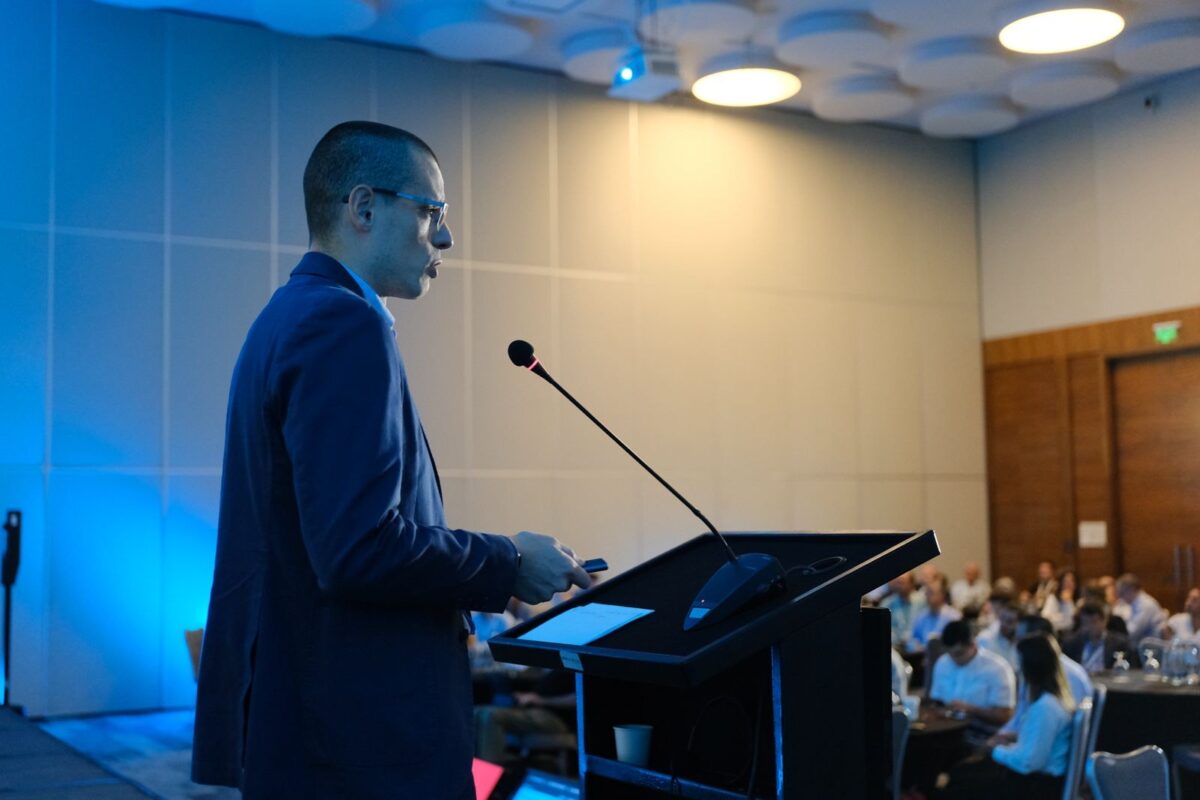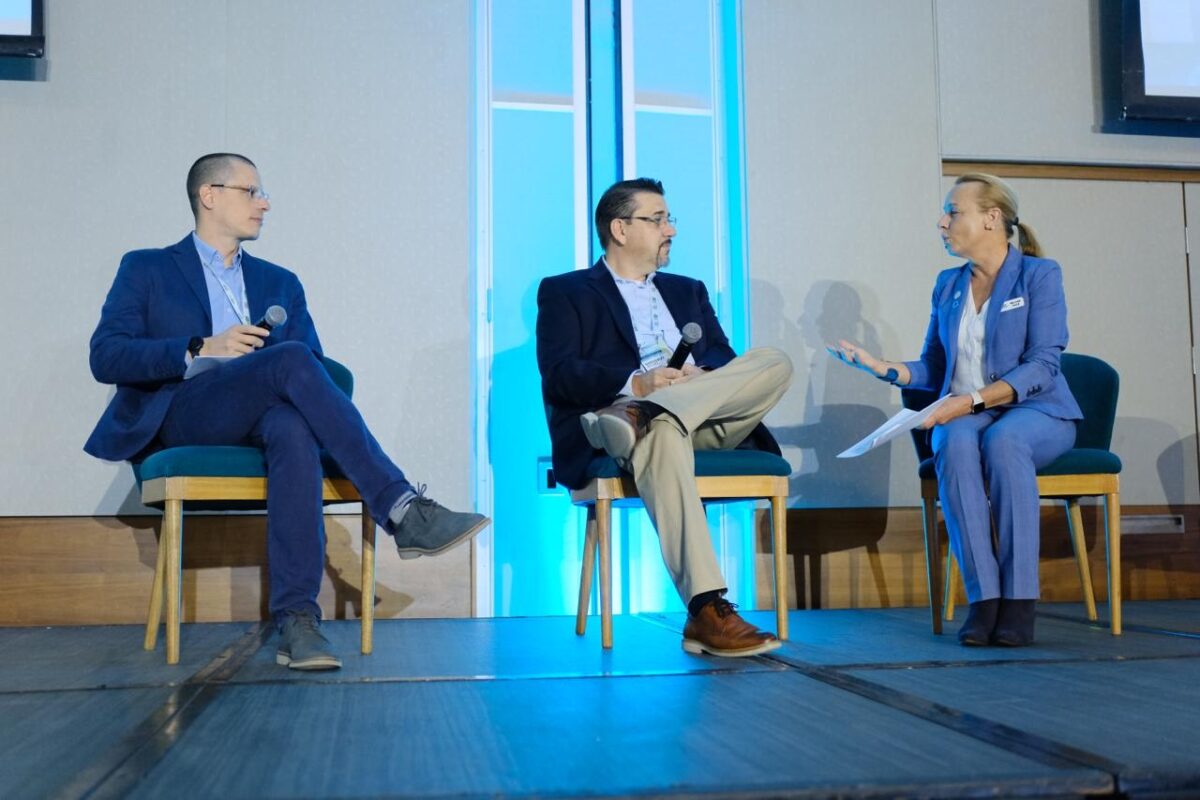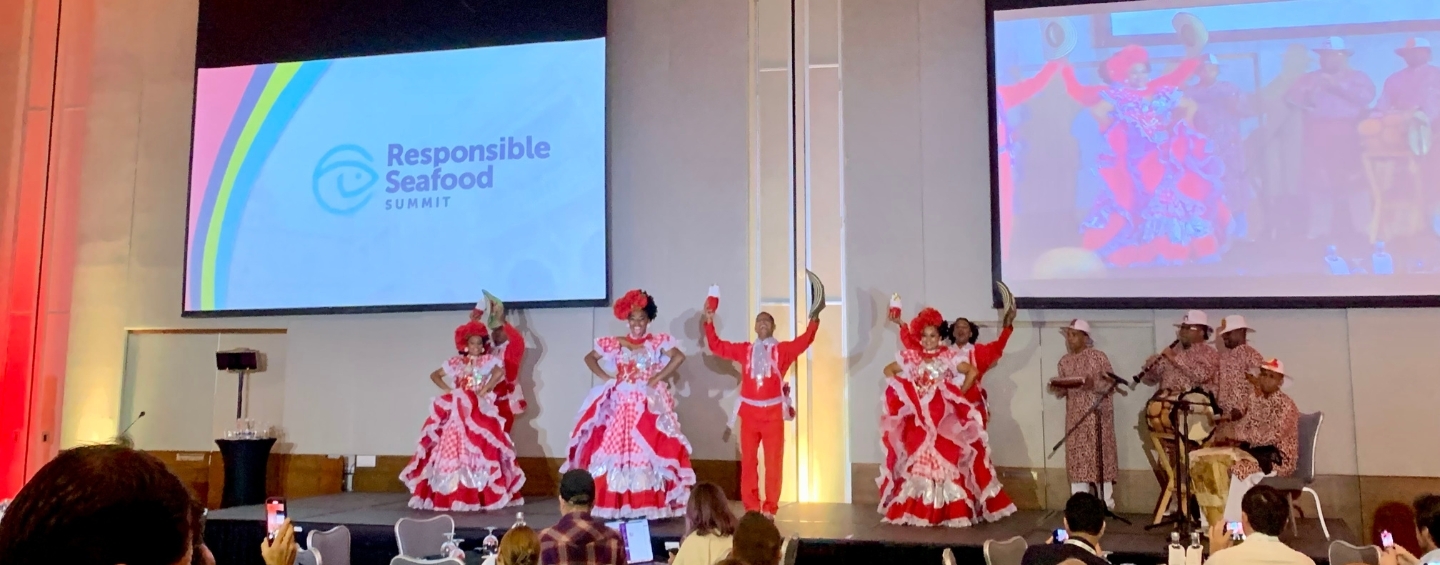From October 1–2, I had the opportunity to attend the Global Seafood Alliance Responsible Seafood Summit in Cartagena, Colombia. The event brought together industry leaders, NGOs, government officials, and producers to explore how the seafood sector can continue evolving toward more sustainable and resilient supply chains.
The summit’s agenda was comprehensive and forward-looking, focused on moving beyond talk toward measurable impact. Sessions covered trade policy, traceability, buyer strategies, and the inclusion of small-scale fisheries, fostering meaningful, action-driven conversations.
I was honored to take part in discussions that explored how supply chains can drive tangible improvements on the water, from advancing fishery improvement projects to creating better market access for small-scale producers. These sessions provided an opportunity to share insights from SFP’s work on connecting buyers, fisheries, and data-driven tools to promote responsible sourcing. More importantly, they offered a space to exchange ideas with peers across the industry, learning how others are addressing similar challenges through collaboration, innovation, and long-term commitment to sustainability


Shifting from projects to systems
A clear theme throughout many sessions was the need to move beyond individual pilot projects and address seafood sustainability at a systems level. Topics such as climate impacts on stocks, antimicrobial resistance, and global trade flows highlighted that the future of seafood depends on cooperation among markets, governments, and producers.
The role of markets
Market demand as a driver for change
One of the key messages from the summit was that buyers and retailers hold the power to shape the future of seafood: By setting clear sustainability expectations, improvements ripple throughout the supply chain. Case studies showed how market demand has accelerated advancements in Fishery Improvement Projects (FIPs), proving that commercial influence can be a force for environmental and social responsibility.
What the agenda highlighted
Technology, policy, and regional perspectives are taking center stage
The summit covered a wide range of themes, all pointing toward a more integrated approach to sustainability:
- Sessions on traceability, data standards, and digital tools underscored that technology is now essential for credible, transparent supply chains.
- Discussions on market mechanisms and procurement models showed how buyers are reshaping expectations and accountability within seafood sourcing.
- Deep dives into science–policy interfaces, governance, and trade highlighted how regulation, incentives, and market forces must align to achieve real impact.
- The inclusion of Latin American perspectives gave the event greater relevance and ensured that regional realities informed global conversations.
Opportunities ahead
From dialogue to acceleration
The summit made it clear that, although progress is evident, the real effort is just getting underway. The seafood sector is ready to move forward, collaboration throughout the value chain is deepening, new tools and data are making sustainability more achievable, and responsible sourcing is increasingly seen as a business imperative rather than an optional commitment.
At SFP, our mission is to keep connecting markets, producers, and knowledge in ways that drive measurable improvements on the water. Events like this help us sharpen our focus on what truly drives change—aligning commercial incentives with sustainability outcomes, ensuring that improvements are verified on the water, and keeping environmental and social performance at the center of seafood supply chains. What happens next depends on how effectively we turn commitments into measurable actions. The discussions in Cartagena set the tone for the next phase, one where collaboration is not just encouraged but expected, and where results, not intentions, define impact.

